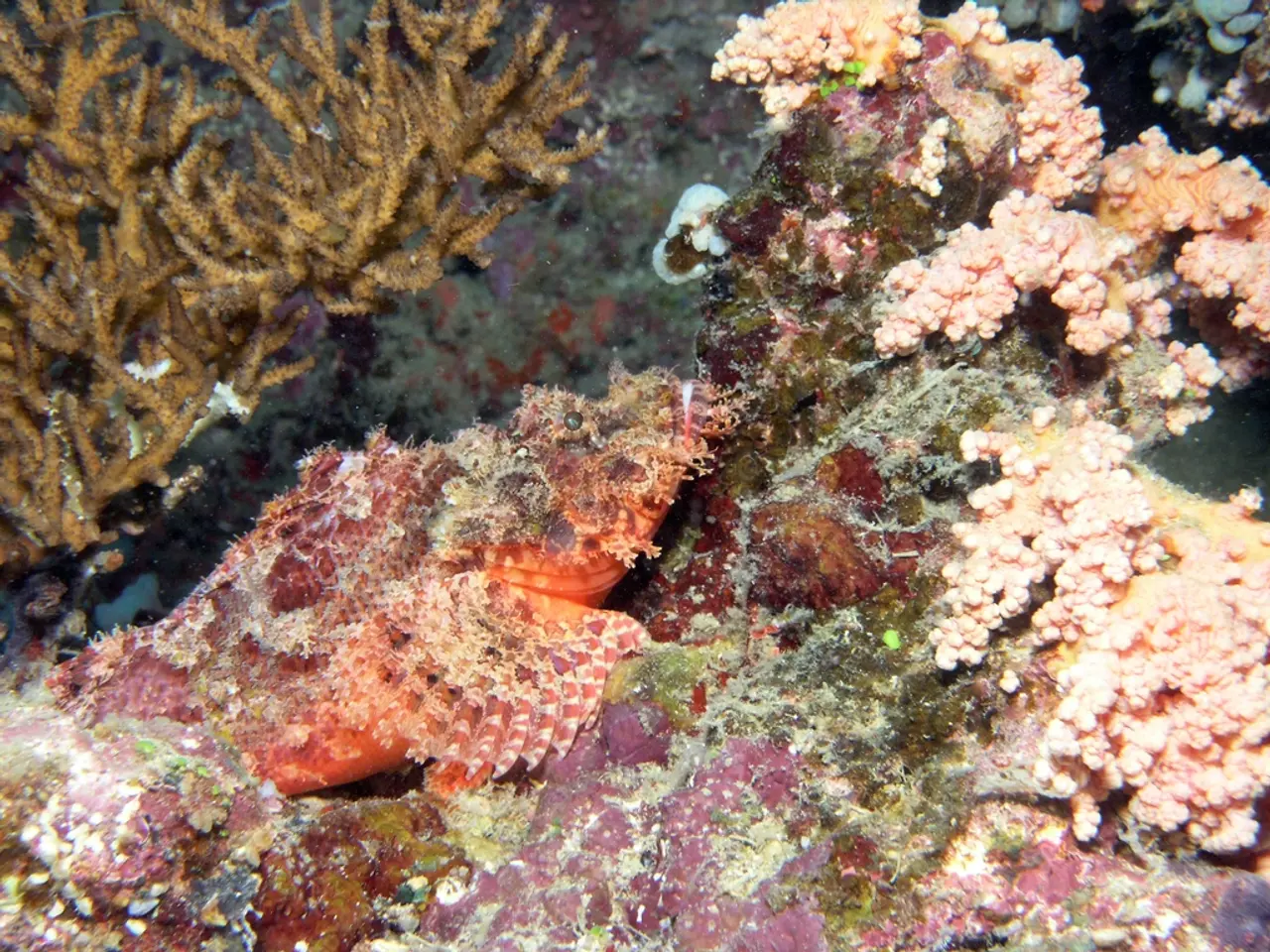Redefining marine monetary matters
The ocean, a vital resource that sustains over 600 million people, particularly in developing countries, is under threat. However, a shift in focus towards sustainable ocean finance could help protect and preserve this essential ecosystem.
Claudio de Sanctis, Head of Private Bank and Member of the Management Board at Deutsche Bank, has highlighted the importance of financial innovation in ocean health. This innovation is shaping the financial sector, influencing policies, and attracting investments that support the United Nations Sustainable Development Goal 14, "Life Below Water."
Key strategies and frameworks for sustainable ocean finance are being developed to create transparent, scalable, and innovative financial mechanisms. These mechanisms integrate environmental, social, and governance (ESG) considerations into investment decision-making, risk assessment, and policy development.
Innovative financing mechanisms, such as biodiversity credits, loan guarantees, blended finance, and project aggregation, are being used to de-risk investments and attract private capital. Standardized frameworks and protocols, like the Ocean Investment Protocol, provide investors with tools to map risks and opportunities, enabling more confident and consistent investments aligned with ocean sustainability goals.
Policy and regulatory development is also crucial. Transparency, greater coherence, and clear sustainability disclosure requirements help guard against greenwashing and increase investor confidence. Integration of scientific insights, including climate resilience aspects, is being incorporated into risk assessments to promote ocean-based solutions.
These frameworks are influencing the financial sector by shaping internal policies and risk assessments, encouraging investment strategies that balance financial return with positive environmental impact, promoting public-private partnerships, and moving ocean finance from a niche area into mainstream sustainable investing.
Collaboration between environmental organizations and major global insurance providers is developing reef insurance products, while the Korean Ocean Business Corporation successfully issued a US$300 million blue-bond, demonstrating that investors respond to a convincing rationale.
The Asian Development Bank's Blue SEA Finance Hub is designed to help Southeast Asian economies structure their blue-economy investments, and the Nautilus Blue Guarantee Company has been launched, offering guarantees for investments in six key blue-economy sectors.
The marine biotechnology market is projected to reach US$6.4 billion by 2025, and improving and scaling up "blue finance" will require determination, commitment, and continued innovation to create and institutionalise investable solutions.
However, less than 1% of the ocean's value has been invested in sustainable projects over the last ten years. The Ocean Panel, a collaboration of global leaders, has identified five priorities to address this gap: managing seafood production sustainably, mitigating climate change, stemming biodiversity loss, seizing opportunities for economic recovery from climate and ecosystem shocks, and managing the ocean holistically.
Despite the challenges, there is optimism that financial innovation can play a key role in the coming months and years for ocean health. Improving and scaling up "blue finance" will require a concerted effort, but with determination, commitment, and continued innovation, a sustainable ocean economy is within reach.
The Global Ocean Health Index dropped sharply in 2024, with declines in measures of habitat, species, and iconic species. However, with the ratification of the UN High Seas Treaty by 50 countries at the end of the United Nations Ocean Conference in June, there is hope that progress towards a sustainable ocean economy can be made.
In conclusion, sustainable ocean finance is a critical step towards protecting and preserving the ocean for future generations. By focusing on innovative financing mechanisms, standardized frameworks, policy and regulatory development, and the integration of scientific insights, the financial sector can better assess risks tied to unsustainable ocean use, unlock new investment opportunities that contribute to a resilient blue economy, and ultimately scale up finance flows needed to protect ocean ecosystems and support sustainable economic growth linked to ocean resources.
- The United Nations Sustainable Development Goal 14, "Life Below Water," seeks to preserve and protect the ocean, a vital resource for over 600 million people, particularly in developing countries, by focusing on sustainable ocean finance.
- Claudio de Sanctis, from Deutsche Bank, emphasizes the importance of financial innovation in ocean health, shaping the financial sector, influencing policies, and attracting investments that support SDG 14.
- Innovative financing mechanisms, such as biodiversity credits, loan guarantees, blended finance, and project aggregation, are being used in sustainable ocean finance to de-risk investments, attract private capital, and align investments with ocean sustainability goals.
- Collaboration between environmental organizations, global insurance providers, and financial institutions is essential in developing reef insurance products, issuing blue bonds, and establishing blue-economy investment hubs, all of which are crucial for improving and scaling up "blue finance."




